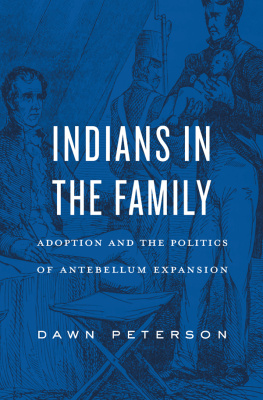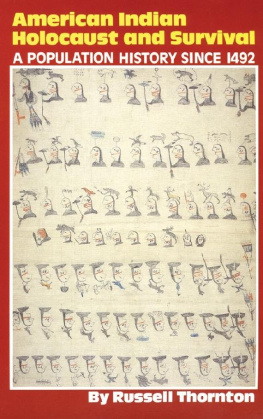VANISHING AMERICA
Species Extinction, Racial Peril, and the Origins of Conservation
MILES A. POWELL


Cambridge, Massachusetts
London, England
2016
Copyright 2016 by the President and Fellows of Harvard College
All rights reserved
Cover design: Lisa Roberts
Cover photograph: Men standing with pile of buffalo skulls, Michigan Carbon Works. Courtesy Detroit Public Library.
978-0-674-97156-1 (alk. paper)
978-0-674-97293-3 (EPUB)
978-0-674-97294-0 (MOBI)
The Library of Congress has cataloged the printed edition as follows:
Names: Powell, Miles A., 1981 author.
Title: Vanishing America : species extinction, racial peril, and the origins of conservation / Miles A. Powell.
Description: Cambridge, Massachusetts : Harvard University Press, 2016. | Includes bibliographical references and index.
Identifiers: LCCN 2016015041
Subjects: LCSH: EnvironmentalismUnited StatesHistory19th century. | EnvironmentalismUnited StatesHistory20th century. | Extinction (Biology)Social aspectsUnited StatesHistory. | RacismUnited StatesHistory19th century. | RacismUnited StatesHistory20th century.
Classification: LCC GE197 .P686 2016 | DDC 333.720973dc23
LC record available at https://lccn.loc.gov/2016015041
Contents
What a beautiful and thrilling specimen for America to preserve and hold up to the view of her refined citizens and the world, in future ages! A nations Park, containing man and beast, in all the wild and freshness of their natures beauty!
George Catlin, Letters and Notes, 1841
I N THE EARLY 1830s , the famed Western painter George Catlin sat in the shade of a wagon, squinted out over the sun-parched plains, and sketched furiously. The scene he sought to capture was fleeting. Amidst a cacophony of thundering hooves and a haze of dust, a band of mounted Indians dashed in and around a herd of bison, unleashing arrows into this snorting, furious quarry. A heaving sea of shaggy black fur extended to the horizon, but as one colossal beast after another tumbled to the ground, Catlin recognized that the hunters would soon sate their needs, bringing the awesome spectacle to a close.
Catlin worried that he might not have another opportunity to capture this iconic chase, for he believed that both these Indians and the bison (commonly referred to as buffalo) that they hunted faced impending extinction. Nearly a decade later he reflected on their melancholy fate. In patronizing imitation of Plains Indians spirituality, Catlin avowed that the Great Spirit had spread the bison over the prairies for the use of the red men, who relied on the animals for subsistence. Believing that commercial hunting doomed the bison to speedy extinction, Catlin expected Plains Indians to follow the animals fading trail. Both hunter and prey were rapidly wasting away at the approach of civilized man, and in a few years more would live only in books or on canvas.
Catlin believed that the extermination of the bison and these Indians would rob the nation of two of its greatest treasures. Nature has nowhere presented more beautiful and lovely scenes, he mused, than those of the vast prairies of the West; and of man and beast, no nobler specimens than those who inhabit themthe Indian and the buffalojoint and original tenants of the soil, and fugitives together from the approach of civilized man. The artist warned that without government protection, both the bison and these Indians would pass from the Earth, leaving only their scattered bones to bleach together under the Western sun.
With Euro-American settlers pushing ever westward, bringing with them agriculture, commerce, and industry, Catlin saw only one hope for the prairies original human and animal inhabitants: a magnificent park, where the world could see for ages to come, the native Indian in his classic attire, galloping his wild horse amid the fleeting herds of elks and buffaloes. Catlin promoted his idea zealously. What a beautiful and thrilling specimen for America to preserve and hold up to the view of the world, in future ages! he proclaimed. A nations Park, containing man and beast, in all the wild and freshness of their natures beauty! For the painter, Indians were a part of the vanishing Western landscape, every bit as natural as bison and elk.
If the government did not heed his recommendation, Catlin warned, The buffalos doom is sealed, and with their extinction must assuredly sink into starvation, the [Plains Indians], who would at last fall a prey to wolves and buzzards, who will have no other bones to pick. Like numerous reformers to come, Catlin used the stark imagery of extinctionof peoples and speciesto push for the preservation of a romanticized preindustrial past.
Present-day readers might cringe at Catlins suggestion that Native Americans could only endure within a park stocked with bison and elk. Yet through his writings the painter revealed a great deal about the history of American understandings of and responses to extinction. Indeed, for as long as Americans have pondered the passing of species, they have contemplated the annihilation of races, and in many instances onlookers have drawn associations between wildlife depletion and racial decline. Today, species extinction reigns supreme as the most dreaded form of biological loss. But well into the twentieth century, many commentators assigned equal if not greater import to the perceived racial tolls of environmental destruction, including the demise of the vanishing Indian and, later, the race suicide of the old-stock white American. As a result, readers looking back on the nations environmental and racial histories will find that efforts to preserve wildlife have often been entangled with understandings of race in surprising ways.
Forty years before Catlin wrote, leading scientists in North America and Europe still debated whether extinction could even occur in a world of Gods flawless design. On the one side stood the American statesman and polymath Thomas Jefferson and his allies. They believed that the Creator had arranged the natural world in a Great Chain of Being, and would never allow extinction to form a breach. On the other side of the argument stood the French naturalist and zoologist Georges Cuvier and his followers. They cited increasing fossil evidence as they contended that species could and had become extinct.
Jefferson clung to his beliefs tenaciously. In his Notes on the State of Virginia he asserted, Such is the oeconomy of nature, that no instance can be produced of her having permitted any one race of her animals to become extinct. Certain that he was right, when Jefferson commissioned Meriwether Lewis and William Clark to embark on their famed exploration of the West he instructed them to seek out evidence of living mammoths, skeletons of which had surfaced in the Eastern states. Of course the explorers failed in this endeavor, lending further credence to a series of articles Cuvier had published shortly before in which he contrasted living and fossil elephants to argue for the irrefutability of extinction. In the ensuing decades, most naturalists accepted Cuviers findings.
Jefferson passionately defended his position, not only out of religious conviction or an interest in New World species but also because he believed the fate of the American people hung in the balance. Since the mid-eighteenth century, European authors, including the leading natural historian Georges-Louis Leclerc, the Comte de Buffon, had asserted that Americas cold, damp environment produced undersized wildlife





